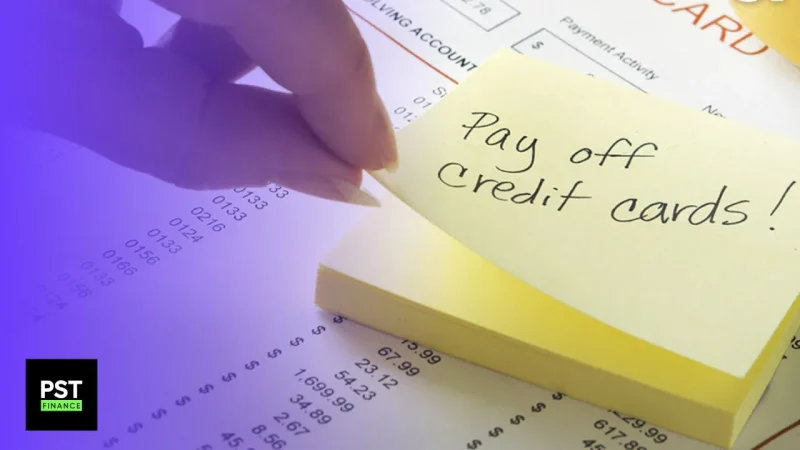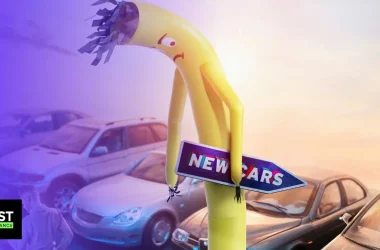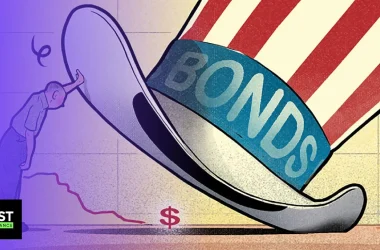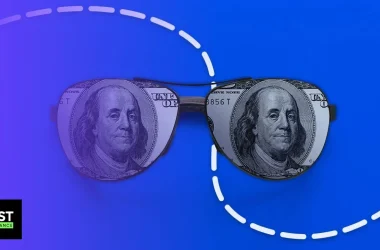Are you tired of feeling burdened by credit card debt? You’re not alone. It’s a staggering fact that Americans collectively owe over $1 trillion on their credit cards. This is a massive number, and no person should be forced to constantly worry about having to pay back the money they owe with even more massive interest payments.
If you’re one of the people struggling with this, don’t worry; we’re here to help you. We’re going to tell you how you can get started on your debt-free journey, and delve into three proven methods that can help you pay off credit card debt as fast as possible.
We’ve got it all covered, from what you can do to increase your income to help pay off your debt- one way will even land you an extra $1,000 each month- to what to do once you’re actually debt-free.
What you need to do first
We won’t just tell you how to pay off credit card debt but how to do it correctly. Many articles online discuss how to pay off credit card debt right away, but they don’t give you all the things you need to do first before you dedicate yourself to the goal of being debt-free, so that’s what we’ll be doing here.
First, call your credit card issuer and see if you can request a lower interest rate due to financial hardships. For example, if you have an American Express (NYSE: AXP) credit card debt, you can go check the American Express Financial Relief Program. By scrolling through the website, you’ll find out that they can temporarily lower your interest rate, provide relief from late payment fees, and lower your monthly payment to make paying off your credit card debt easier for you.
Keep in mind that if you apply to this program, your bank might block some of your credit card benefits and rewards. But, using your credit card for benefits should be the least of your worries when you’re paying off credit card debt. Next, you should go to another card issuer with whom you don’t have debt and apply for a brand new credit card with a 0% intro APR.
Here’s an example for you: If you have debt with American Express, go to Citi (NYSE: C) and get a 0% intro APR card. This way, you’ll enjoy a promotional period during which you don’t pay any interest on the new card. This period depends on the card you get and can last from 12 to 21 months or more.
After getting the new Citi card, go back to American Express and request a balance transfer, either from their website or by calling them. You can then move your debt from one credit card with interest to another with 0% interest, which gives you a chance to pay off your debt without any interest.
The trick is quickly paying off your debt before the promotional period ends, saving thousands of dollars. Picture this: You have $5,000 in credit card debt, and your card has 30% interest. When you get to pay this debt back, you’ll end up paying an extra $1,500 on your $5,000, but if you do the balance transfer trick, you won’t pay that extra money but just a transfer fee of about 3% to 5%, as well as your $5,000 debt.
Before you do this, however, make sure you’re ready to provide any information about the debt you’re looking to move, including the issuer’s name, the amount of debt, and the account information. Keep in mind that the balance transfer request can take up to two weeks or longer.
You should also consider the fact that doing this requires a lot of discipline. Many people do this and move from one credit card to another, and from a pile of debt to another, getting themselves stuck in an endless cycle of debt.
Therefore, you should only follow this tip when you want to pay off your debts in a year or so; you shouldn’t use it to fund your personal lifestyle.
How to pay off credit card debt
Now, you’re ready to start paying off your credit card debt before that 15-month promotional period is over, so let’s get into the tips for doing that quickly.
Budgeting
Let’s get one thing straight: we can’t talk about how to pay off credit card debt when you have no plan. You see, paying off credit card debt isn’t about having some money and sending it over to your card issuer. It’s also about having a system that helps you pay off debts efficiently and stay out of debt.
Some people live paycheck-to-paycheck and use whatever extra money they have by the end of the month to contribute to their debt payments, but having no plan makes them unaware of how much money they’re actually spending. They easily fall back into bad spending habits and get back into debt.
You don’t want to make these mistakes. You want to have direction and stick to a budget.
A budget will reduce your dependency on credit cards. Listing your expenses visually, whether on paper or in an Excel sheet, makes you more aware of what you’re spending your money on, making it easier to recognize your most important expenses. These are the expenses you should prioritize.
But, don’t use them to justify not paying off your debt. In fact, you should try to reduce your expenses as much as you can. Try to limit just a third of your income to monthly expenses.
You need to pay your essential utilities: gas, water, electricity, internet bill, and phone bill. Of course, these are important costs that can’t be negotiated, but you can change your phone bill.
According to CNBC, the average cell phone plan now costs $144, which is ridiculous. If you abandon big names like Verizon or AT&T, you can reduce your monthly expenses and get a phone plan for half this amount.
Instead, work with a mobile virtual network operator, like Mint Mobile, Consumer Cellular, or Republic Wireless, which offer plans ranging from $15 to $40. These companies don’t have their own networks like the large carriers, but they essentially act as middlemen, purchasing data in bulk from the large carriers at wholesale and then reselling it to consumers.
Meaning, you can get the capabilities of a large network without the premium price. The average bill when you use a mobile virtual network operator is $77, just about half of the large carriers.
After prioritizing your important expenses, you might want to take at least 5% of your money every time you get paid and have fun with it. If you’re thinking, “I want to pay off debt. I don’t have time for this,” we’ll have to stop you there.
Debt is a behavioral issue that requires discipline and motivation to tackle, so to stay motivated, you should have something to look forward to when you get paid each month. You can cut this out, but we recommend that you don’t. It’ll make your whole journey a lot easier.
Debt Avalanche v.s. Debt Snowball
There are many methods people use to pay off their debts, and we’ll walk you through three of them. The first method is known as the debt avalanche method, where you pay your debts in order of highest interest rate to lowest interest rate, regardless of the balance.
At first glance, this might sound really smart, at least from a math point of view. But, debt is more of a behavioral problem than a math problem, so you need to stay motivated actually to pay off all your debts.
If you use this method, you won’t see a big difference in your debt balance or the number of your debts, and you’ll take longer to pay off one debt so you might get discouraged. Think about it: If the largest debt you owe is student loans over $10,000, how long do you think it will take you before you start seeing a dent in this big number?
Therefore, the second method is the best one: the debt snowball method. On average, people who use this method are debt-free in 18 to 24 months.
You pay for your debts from smallest to largest balance, regardless of the interest rate. As you do this, you gain momentum and motivation as you knock down small balances one by one. The next thing you know, you’ll be debt-free.
Here’s a step-by-step guide to the debt snowball method. First, list your debts from smallest to largest regardless of interest rate. There’s an app called Every Dollar you can use for that, which automatically rearranges your debt from smallest to largest for you.
After this, you can make minimum payments on all of your debts except the smallest, then throw as much extra money as you can on your smallest debt until it’s gone. The last step is just to repeat the process until each debt is paid in full.
Before you start worrying about interest rates, let me tell you that they don’t matter when you use the debt snowball method. You need the small wins to keep going and not give up.
Debt Consolidation
The third method is debt consolidation, which can be useful if you have credit card debt across multiple cards. Debt consolidation involves combining multiple debts into a single payment with a lower interest rate.
You do this by going to your card issuer and asking for a debt consolidation loan. Like any loan, you’ll be charged interest, but unlike credit card interest, which can be more than 20%, debt consolidation debt currently averages around 9.09%.
But before you apply for this, you need to understand the drawbacks. First, you may not get approved for a lower interest rate since the interest rate you receive for any new loan or line of credit will depend on your credit score and credit report.
Generally, a higher credit score will help you get lower rates, while a lower credit score will land you higher interest rates. So, this method is limited to having a good credit score.
A good tip is to switch between the three methods every once in a while so you get an idea of how each method works and figure out which one works best for you.
Making Some Extra Cash
It might be hard, but you should try to get a second job after your 9 to 5. Try to find a job with a minimum pay of around $15 per hour. This could get you an extra $1,000 monthly if you work four hours in that job for five days each week, and more money if you work longer hours.
Do this for 10 to 12 months, and you’ll have $10,000 or more in extra income you can use to pay off your debt.
If you don’t have the time to get another job, you can use a platform like User Interviews and attend a paid online focus group, which pays you to attend online meetings and share feedback on product ideas.
You can also go through your stuff at home and try to sell whatever you don’t need, like old clothes or old furniture, which can be a fun process that will help you get rid of clutter and stuff you don’t need.
What to do once you’re debt-free
If you manage to pay back $10,000 of debt in one year, you can still use the methods we discussed to save $10,000 the year after. You might want to close every credit card you have for a while because many people end up getting back into debt after paying it off, so you might need to take a break from them.
Deal with your purchases on a cash basis or debit basis. The benefit of this is that you don’t have any debt, and you can’t get into debt because you don’t have a credit card.
On the other hand, the disadvantage is losing credit card benefits, but in reality, these are just incentives built in to hook you in and get you to spend more credit. You can then go back to using a credit card, but only when you have the money you want to spend in your bank account.
Finally, remember that discipline and speed are the most important things when it comes to paying off your credit card debt. You need to start paying off the debts as soon as possible because every month you spend pondering, more interest accumulates. Hopefully, you can use some of the tips we gave you today in your debt-free journey.
Disclaimer
Please visit and read our disclaimer here.









